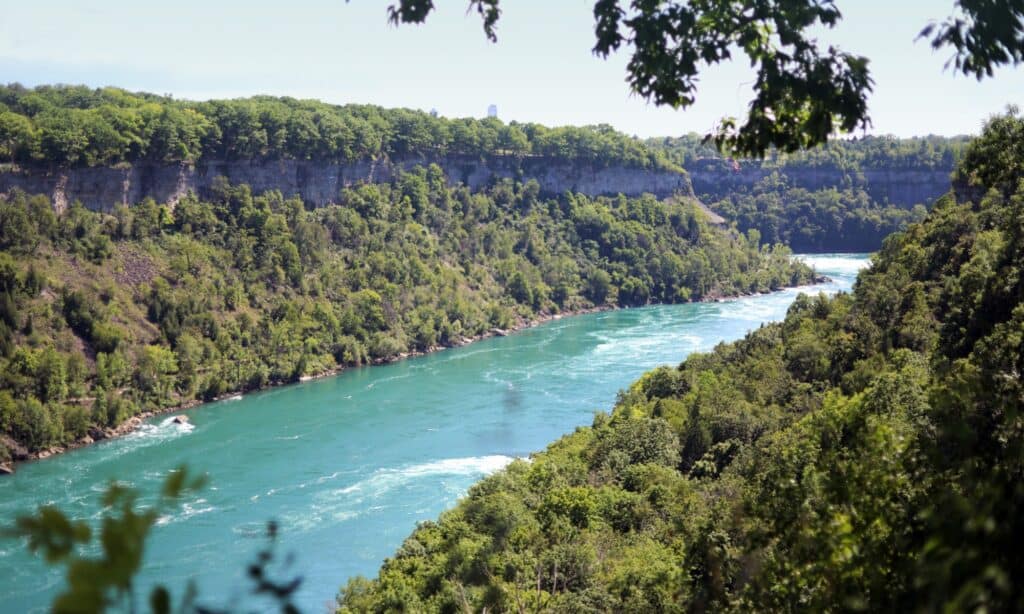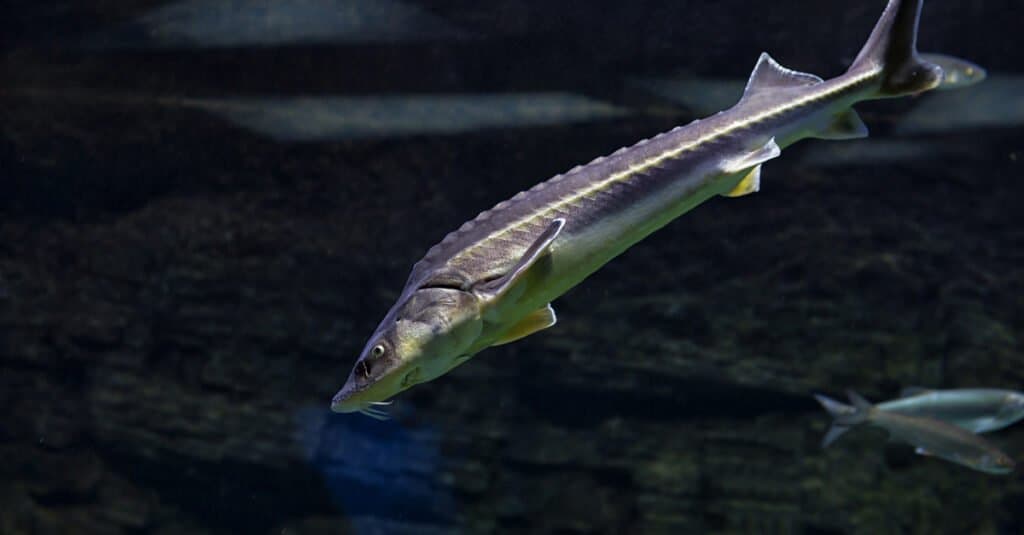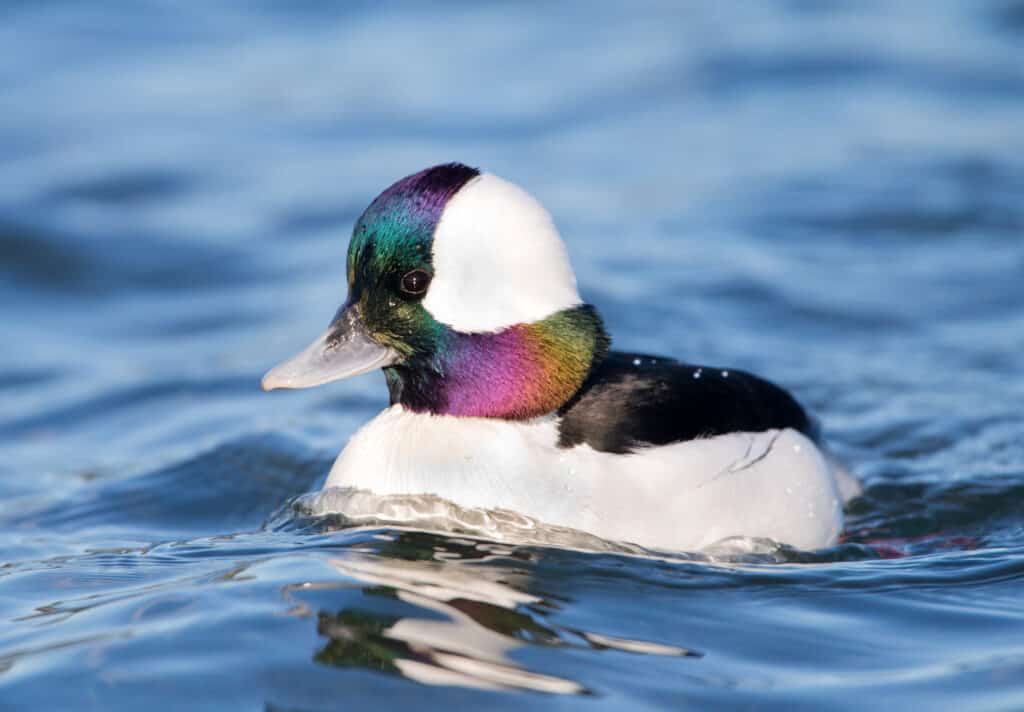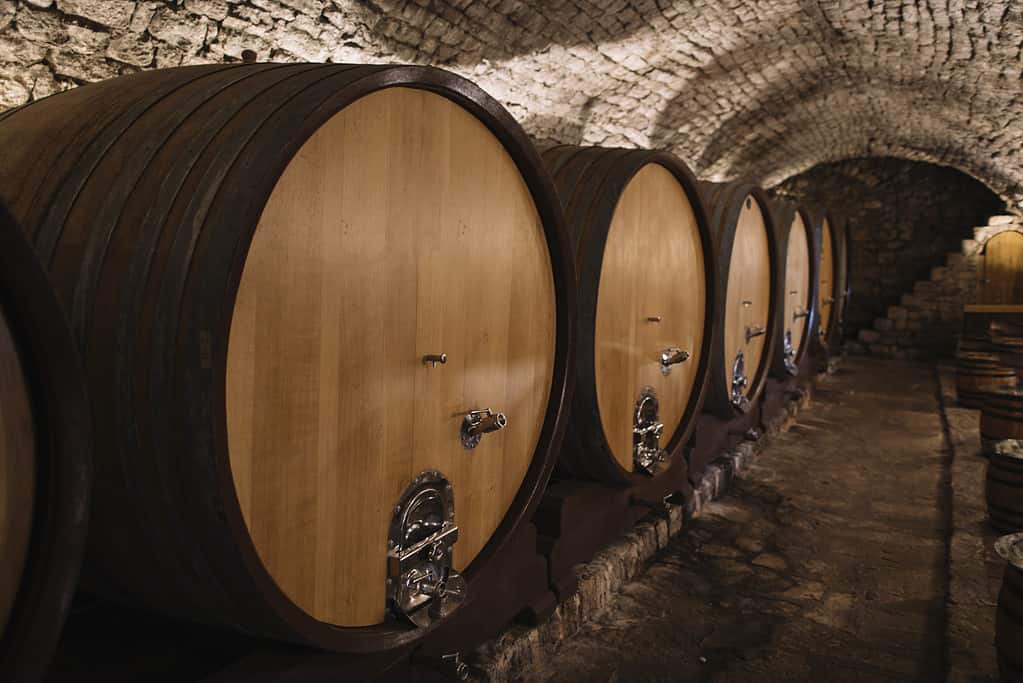While Niagara Falls may not be the tallest in the world (some 500 others out-rank the falls!), the massive amount of water these beautiful falls flow through is what makes them so impressive. Tall falls usually “trickle” in comparison to Niagara. The massive river that feeds the falls and their sheer width help to make Niagara one of the most famous in the world. But there’s more to Niagara than the famous falls. In fact, the Niagara River is an experiential destination in itself.
History of Niagara River

Niagara Falls is located on the border of Buffalo, New York, and Ontario, Canada
Part of the Great Lakes Basin, and therefore part of the largest freshwater system on the planet, the Niagara Falls are an integral part of the freshwater history of the United States and lower Canada.
The falls and river remain in existence post the last Ice Age some 18,000 years ago. Back then, the whole of Southern Ontario was covered in sheets of ice several kilometers thick. As the ice melted, the Great Lakes Basin was carved out as the ice shrank toward the north. Roughly 12,500 years ago, the Niagara Peninsula thawed out and turned into Lake Erie, Lake Ontario, Lawrence River, and Niagara River, all flowing out to the Atlantic Ocean.
The Indigenous people who moved into the region discovered Niagara long before European settlers came to the area, with evidence that by the early 1600s, some 12,000 Neutral Indians live in the area. The nation was the largest native group in the Northeast at the time. The entire district, from the western end of Lake Ontario to the north of Lake Erie, and along both sides of the Niagara River was known as Onguiaahra. This word means “the strait” or “thundering water.” This word ultimately gave us the name of Niagara.
Once Europeans came into the area, the Niagara River became incredibly important to the fur trade, with routes along the river and into Fort Niagara at its mouth, built in 1678. The fort was a major supply depot during the American Revolution for the British, which helped to establish the line in the river that ultimately became the Canadian border.
More Recent History
Niagara River has also provided a long history of power supply and development, harnessing the hydroelectric power of the massive falls for chemical production and more. This, of course, led to many public health disasters in the area (such as the Love Canal Tragedy in 1979). Eventually, pressures mounted enough to clean up the act and the issues have largely been addressed around the Falls and River to reclaim the waters for healthier uses.
Because of the beauty of the falls, Niagara has become one of the premiere tourist destinations in North America. This helped lead to much of the industry in the area — both prior to the public health concerns and post — and now the area is largely focused on tourism and nature.
How Big is Niagara Falls?

Although many people believe they’re the largest, Niagara Falls aren’t the largest in the world by a long shot. They rank lower than 500th in size!
The falls that make up what is known as Niagara Falls come in various heights and volumes.
On the Canadian side, Horseshoe Falls drop about 188 feet into the Lower Niagara River, approximately 2,200 feet wide. The pool below is 100 feet deep.
The American Falls are about 850 feet wide and 70 to 100 feet tall depending on the measuring location.
The smallest across of the three falls, Bridal Veil, is only 55 feet wide, but still 181 feet tall, making it the second tallest falls.
More than 6-million-cubic feet of water goes over the crestline of the falls every minute at the peak season of water flow, with the rapids roaring at a speed of 25 miles per hour and as fast as 68 miles per hour. The Whirlpool runs at an average of 30 miles per hour and Devil’s Hole Rapids speed through at 22 miles per hour.
The Niagara River itself flows at 18,700 cubic feet per second and accounts for roughly 83% of the water flowing into Lake Ontario.
The Niagara River connects Lakes Erie and Ontario and carries with it water from the other three Great Lakes (Michigan, Superior, and Huron). Also, an international waterway, the Niagara River connects Canada and the United States along its 36 miles’ length.
How Deep is Niagara River?

The Niagara Glen Nature Reserve is one of the most beautiful places to witness the mighty Niagara River.
At its deepest point, the Niagara River is 170 feet deep beneath the falls, making it an incredibly deep, full river, especially for its mere 36-mile length.
Away from the falls, the water is as shallow as 9 feet (beginning of the upper Niagara Rapids) to 50 feet (below the Chippawa-Grass Island Pool control structure).
If you’re curious about how Niagara River compares to some others, check out the Chicago River, Yellowstone River, and Delaware River.
The Importance of Niagara River and Falls
Nearly 130,000 people rely on the Niagara River and Lake Ontario for their drinking water. The River also helps to provide economic importance for the area, specifically tourism. Since the 1950s when a film starring Marilyn Monroe was filmed in the area, the location has exploded in popularity for honeymooners and romantic getaways, as well as family travel, and more. Casinos, tours, wineries, and more have sprung up since and created the tourism economy, with roughly 12 million tourists visiting every summer.
Ecology of the Niagara River
Numerous species make their home in and around the Niagara River, with others migrating through, spawning, or overwintering in the region.
Fish Species

Lake sturgeon is also known as a living fossil.
Some 60-plus species of fish may be found in the River, including:
- Lake sturgeon (Endangered)
- Smallmouth bass
- Rock bass
- Yellow perch
- Walleye
- Rainbow trout
- Northern pike
- Brown trout
- Steelhead
Migratory species seen regularly include:
- Spottail shiner
- Gizzard shad
- Emerald shiner (a keystone species for the river)
Bird Species

The peak of the bufflehead migration is in November.
Because the Niagara River remains fluid (does not freeze) in winter, the river is a critical site for overwintering for waterbirds. Over 90-plus species overwinter and live here, including:
- Canvasbacks
- Peregrine falcons
- Tundra swans
- Common goldeneyes
- Long-tailed ducks
- Greater scaup
- Lesser scaup
- White-winged scores
- Bufflehead ducks
- Common mergansers
- Red-breasted mergansers
- Bald eagles
- Ring-billed gulls
- Bonaparte’s gulls
- Herring gulls
- Green herons
Additionally, many other gulls and waterfowl make their home, migratory, or overwintering home here.
Animal Species

Many mammals, like this adorable skunk, roam near the waters of the Niagara River.
Along the pristine waters of the Niagara River, you’ll have the chance to encounter a wide range of intriguing mammals, reptiles, and amphibians. Some of the most notable or most “popular” include:
- Northern dusky salamanders (rare)
- Common garter snakes
- Milk snakes
- Bullfrogs
- American toads
- Painted turtles
- Snapping turtles
- Red squirrels
- Fox squirrels
- Skunks
- Raccoons
- Weasels
- White-tailed deer
- Rabbits muskrats
Where is Niagara River Located on the Map?
The short river runs only 36 miles, flowing between Lake Erie at Buffalo, New York, through the Niagara Escarpment, into Lake Ontario. Basically, the river crosses the Niagara Peninsula across New York and Canada.
Surrounding cities include:
- Niagara Falls, Ontario
- Buffalo
- Tonawonda
- North Tonawonda
- Lewiston
- Youngtown
- Niagara-on-the-Lake
What to Do Along the Niagara River?
One of the best things about planning a trip to Niagara is knowing that the tourism industry is alive and well there – and you’ll have more than you could possibly ever do in a single trip just waiting for you.
Some of the popular attractions and activities around include the following choices.
Maid of the Mist
Perhaps the most well-known attraction/activity at Niagara is at the falls themselves, in the form of a boat ride and tour known as the Maid of the Mist. While the falls most certainly aren’t the only big draw along the Niagara River, it is the most popular and most impressive.
Touring the waterfalls aboard the Maid of the Mist boat offers perspectives of the falls that land viewing can’t. You’ll want to grab a poncho or wear your swimsuit, though, as the falls will soak you as the boat rides beneath the falls. Thankfully, rain gear is provided if you don’t have your own.
The tours run about 20 minutes, the prices are modest, and the best times to go are early morning before the majority of your fellow travelers hit the docks.
Niagara Glen Nature Reserve
For a free local activity, head over to the Niagara Glen Nature Reserve. Here, you’ll have a bigger chance of seeing some of the amazing wildlife in the area while you hike and enjoy the stunning Carolinian forest. Most folks recommend 2 hours to a half day should be set aside for the reserve.
While you’re here, you’ll also have a chance to explore the Niagara River itself and see in the incredible, natural whirlpool. The trail is about 2 miles long and the reserve offers a nature center with knowledgeable staff who offer guided hikes May through August.
Old Fort Niagara
For a few hours to half the day, head over to the Old Fort Niagara, situated on the U.S. side of the falls. The fort dates back to the 17th Century, with French, British, and American use throughout the years. The site has seen numerous wars, including the American Revolution and the French and Indian War, and happens to be the longest operational fort in North America.
Overlooking the Niagara River and Lake Ontario, the fort is a great location for a centralized visit to the region and all it has to offer.
Regional Wineries

Thanks to the amazing soil and distinctive weather in the region, Niagara has become a huge winery and vineyard destination.
Journey Behind the Falls
For a 1-2 hour activity in the heart of Niagara, join up with the Behind the Falls tour, even if you’ve already done Maid of the Mist. The tour takes you on an elevator up to the observation deck, offering incredible views of Horseshoe Falls and Niagara River. Then, you head down into the caverns and behind the curtain of water at various points.
Journey Behind the Falls is exceptionally popular, though, so be sure to head over early and have plenty of time to navigate the crowds. The attraction opens right at 10 am.
Devil’s Hole State Park
What would a river adventure be without hitting up some of the unique state parks in the area? Head to Devil’s Hole State Park for an outdoor adventure suitable for the whole family. The views overlook the incredible Devil’s Hole Rapids, plus there are plenty of hiking trails, picnic areas, fishing spots, and much more all throughout the park.
Niagara Falls State Park
One of the nation’s oldest parks, the Niagara Falls State Park is well worth the visit for many reasons. The protected area not only contains the famous falls but offers many other attractions, hiking trails, observation points, and even the Niagara Scenic Trolley. Be sure to plan plenty of time for your visit beyond just the falls – there’s loads you’ll want to do here, including tasty dining, beautiful hiking, and fun activities.
Niagara Hornblower Funicular
The phrase “scenic train ride” doesn’t do justice to the experience that is Niagara Hornblower Funicular. The mountainside train is a unique attraction that remains one of the oldest functioning in the country. The funicular offers incredible views of the landscape throughout a wide range of terrains for all ages to enjoy.










